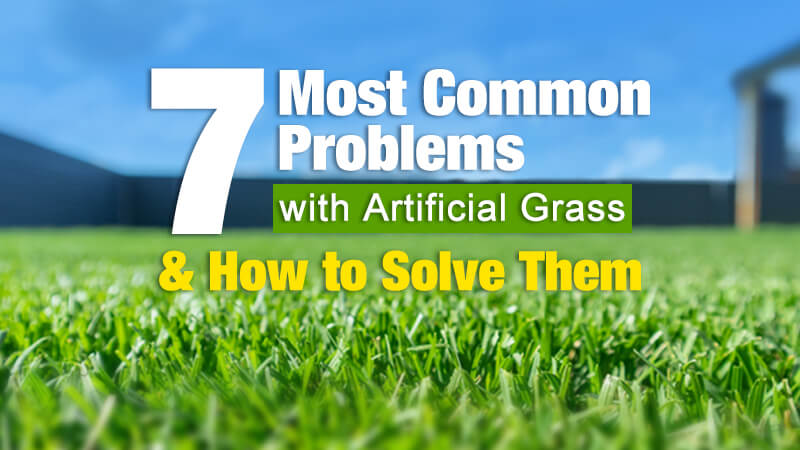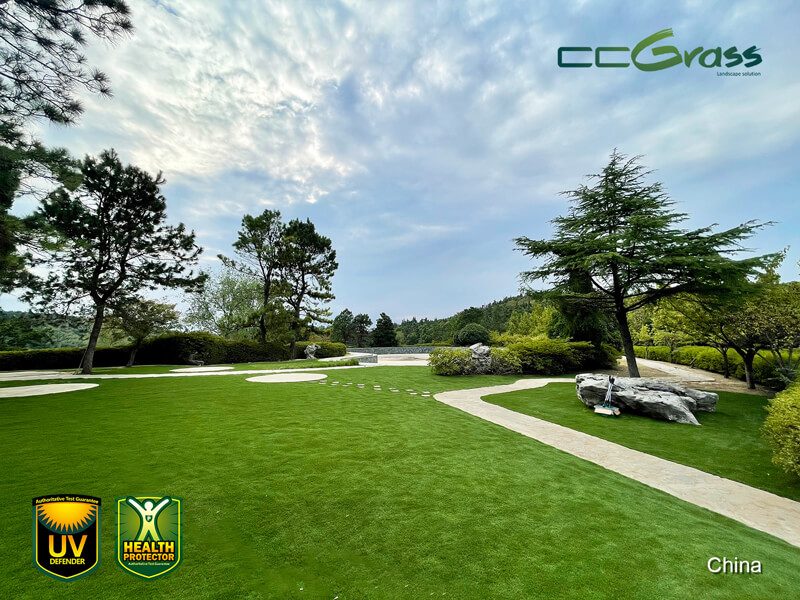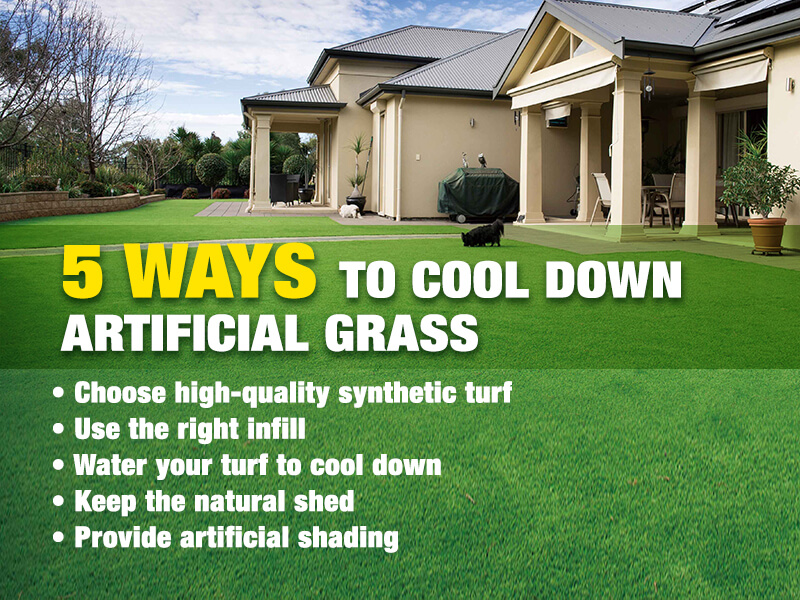7 Most Common Problems with Artificial Grass & How to Solve Them
- 11/16/2022
Artificial grass is becoming more and more popular, especially in areas where water is short and natural grass is difficult to grow. Are you looking forward to turning your area into a nicer, lower-maintenance green space?
The artificial turf project is a relatively large budget, so it is necessary to understand some possible problems with artificial grass before purchasing. This guide will detail the solution to each situation to help you have a more perfect artificial lawn.

What are the problems with artificial grass?
Problem 1: Buying the wrong type of artificial grass
There are many different types of artificial grass. Each class is used for a specific purpose, with varying product specifications, including texture, color, pile height, etc. Sports turf differs from landscape turf, and choosing the wrong artificial turf for your area can lead to complete unavailability.
Solution: Research or consult & Ask for free samples
Do proper research or consultation to educate yourself about the different types, characteristics, and specifications of artificial grass to make the most informed decision.
It would help if you also thought about what you want to do on the lawn. If you and your family do many exercises, you’ll need a surface that can withstand running and jumping. If you enjoy entertaining and lounging on the lawn, you may prefer one that is comfortable underfoot.
CCGrass manufactures a wide range of synthetic turf for various sports, residential, commercial, pet, golf, urban landscape, and other uses. And we offer free samples so that you can see and feel the products firsthand.
Problem 2: There are color difference and wrinkles in your turf
Some people like to pave an area first to try it out. However, it may be challenging to match the original when installing the entire yard later. Buying in different batches is often the cause of chromatic aberration.
During transportation, the turf may have folded due to compression, which will affect the appearance of your lawn if not treated properly.
Solution: Purchase the required turf at one time & Place it in the sun before paving
There may be slight differences, even if it is the same product series but from different batches. For best results, take precise measurements and buy all artificial grass in one go. In addition, depending on how erect the yarn is, it reflects light differently, which will have a certain impact on the color presentation.
Wait to start installing when your newly purchased artificial grass rolls arrive. Lay the turf flat in the sun for a few hours to allow it to stretch – this will remove creases, and the fibers will be in better condition. Artificial turf may also wrinkle due to an uneven base, as discussed below.
Problem 3: The lawn surface looks bumpy
Rough surfaces can spoil the appearance of your lawn, and natural puddles may form on rainy days, causing drainage problems with artificial grass. The above issues are often the result of improper installation.
Solution: Install your artificial turf properly
Improper installation will cause problems with artificial grass. Inadequate sub-base compaction will result in an uneven turf surface. Use a vibrating plate compactor (rental available) to compact the base to ensure the site is thoroughly compacted.
Besides, the uneven surface can be also caused by poor securing of the seams and edges of the turf. In this case, use turf nails every 1-2 feet to secure them. A flat grass surface will be safer for kids and the elderly.

Problem 4: Seams are visible
People buy artificial grass in pursuit of beautiful and natural effects. After you’ve spent a lot of money and time on your project, you would want to avoid seeing apparent seams.
Solution: Hire experienced turf installers
The most foolproof way to solve the problem of artificial grass joint lines is to hire a professional installation crew, especially if two larger pieces of turf need to be joined together.
If you want to do it yourself, follow some steps.
- Cut off the manufacturing edge strip (if present) or cut off another stitch so that there is as little backing as possible next to the stitch and butt the two edges together.
- Fold back the edges and position self-adhesive seaming tape (smooth side down) so that the edges of the carpet meet down the center of the tape when joined.
- Fold the turf back into the adhesive tape starting from one end. Work your way down the seam carefully, jointing the two pieces together. Make sure tufts aren’t damaged or buried.
Problem 5: weed growth
Weeds are difficult to grow from the soil through properly installed artificial turf. Multiple steps in the installation process prevent weeds from growing. Excavating this area will remove weeds on the surface, and the compacted base provides an additional barrier for weeds. But even so, weeds may still appear from drainage holes or wind-blown seeds.
Solution: Use a weed barrier
Preventing weed growth is as simple as covering the bottom layer with a reliable weed barrier membrane during installation, saving you much trouble and unnecessary costs in the future.
Problem 6: Odor from pet waste
Odor is a common concern with artificial grass among families with pets. If pet urine is left on the lawn too long, it can release an unpleasant odor. If left untreated, it will leave urine stains and produce bacteria.
Solution: Promptly clean up & Use CCGrass pet turf
When you find pet waste on the artificial lawn, pick up solid pet poop in time and rinse the urine directly with water. There are also ways to deal with odors and stains from untimely cleaning. Mix equal amounts of white vinegar and water, sprinkle the mixture on the urine-stained area, wait for about 15 minutes, and then wipe with a damp cloth.
CCGrass artificial grass for pets is specially designed with AegiPro tech, which inhibits the growth of bacteria and mold on the grass surface and prevents the generation of odors. On top of that, our pet grass usually has a 100% permeable backing, which drains faster than typical fake grass.
Problem 7: Surface heat in summer
Generally, synthetic turf is made of PE material, which absorbs heat like most materials. Many people have problems with artificial grass whether it can be used comfortably in summer.
Solution: Choose our Grass Cool series & cool grass with some simple methods
Most high-quality artificial grass is added with UV inhibitors, which have UV-resistant properties that resist the absorption of sunlight. It is not as hot as concrete or ceramic tiles. And once the sun weakens, it cools faster.
For scorching areas or customers who need self-cooling grass, you can choose the CCGrass GrassCool series, which uses advanced technology and materials to offer extra comfort.
There are many simple and easy ways to keep artificial grass from becoming too hot and comfortable, even in the hot summer. Check the article to learn about 5 ways to cool down artificial grass.
To sum up the problems with artificial grass
From the above, we can see that most problems with artificial grass can be easily avoided or solved. Once the turf is installed correctly, you can enjoy a gorgeous and refreshing lawn for the next ten years with only light and regular maintenance.
We offer various styles of highly realistic, kid-friendly, and pet-friendly artificial turf surfaces to help you create your dream garden. Whether you want to spend some good family time on it, have a picnic, or enjoy the greenery, these can add great joy to your life.




